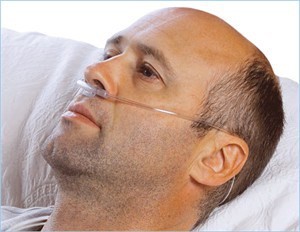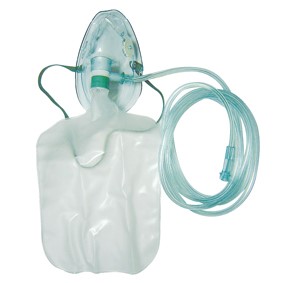How to prescribe oxygen
Oxygen prescribing for medical students, OSCEs and MRCP PACES
Basics of oxygen prescribing
- Oxygen is a drug and should always be prescribed
- There are relevant places on drug charts to do this, usually defined with two options: 88-92% or >94%
Target saturations
- Aim for oxygen saturations of 94-98% in non-COPD patients
- There is no point in aiming for sats of 100%
- In fact saturations of 100% are less helpful than 98-99% as they can reflect a normal PaO2 (10-13 kPa) but may also reflect an inappropriately high kPa of e.g. 30 (in an over-oxygenated patient)
- As such, if your patient has sats of 100% on 35% Venturi, decrease it to 28% and see if saturations stay in the target range. If they do, use the lowest oxygen delivery percentage available to reliably maintain sats in the required range
- Aim for sats of 88-92% in patients with COPD
- This is a complex area so Oxygen Prescribing In COPD is covered here
Oxygen therapy
- Oxygen comes out of tap in wall at 100% concentration.
- Different devices tolerate different flow rates (from 0-15L/min) and this flow rate can be set on the wall tap
- The percentage of oxygen delivery depends on the flow rate and the delivery device. The main type of oxygen deliver device are outlined below.
Nasal cannulae
- Deliver 24-30% O2 (this is an FiO2 of 0.24-0.3)
- Flow rate maximum 4L/min
- Comfortable and well-tolerated but can dry the nose. If patient complain of this use a humidified circuit (oxygen passed through water prior to getting to patient)
- Use for non-acute ward use, or if mildly hypoxic

Nasal cannula (deliver 24-30% oxygen)
Hudson mask
- Delivers 30-40%
- Flow rate 5-10L/min
- Not commonly used any more
Hudson mask (delivers 30-40% oxygen)
Venturi mask
- Delivers 24-60% oxygen depending on colour of fitting.
- Flow rate (oxygen flow rate is set on the O2 wall tap) is shown on mask along with the % O2 delivery. Each colour must be used with a given flow rate (written on the mask) to give the correct oxygen percentage.
- Often used in COPD as it the most accurate way of giving variable percentage inspired oxygen.
- Types:
- BLUE = 2-4L/min = 24% O2
- WHITE = 4-6L/min = 28% O2
- YELLOW = 8-10L/min = 35% O2
- RED = 10-12L/min = 40% O2
- GREEN = 12-15L/min = 60% O2
Blue (24%) and yellow (35%) venturi masks
Non-rebreather mask
- Delivers 85-90% with 15L flow rate.
- Bag on mask with valves stopping almost all rebreathing of expired air
Used for acutely unwell patients BUT note that uncontrolled high flow oxygen is damaging (see notes opposite). As such, a non-rebreather is rarely indicated for long-term treatment.
Non-rebreather mask
Non-invasive ventilation (CPAP/BiPAP)
- CPAP= continuous positive airway pressure = high pressure air/oxygen with a tight fitting mask. Positive pressure all the time.
- Keeps airways open in sleep apnoea or heart failure.
- Click here for details on intensive care, CPAP and BiPAP and click here for details on the practicalities of how to start patients on CPAP
- BiPAP= bilevel positive airway pressure = high positive pressure on inspiration and lower positive pressure on expiration. Used in COPD and atelectasis.
Invasive ventilation
- A ventilation bag or machine is attached to an artificial airway to ventilate lungs.
- Gives total control over flow or volume, percentage inspired oxygen (FiO2) and respiration rate – and therefore total control over minute ventilation.
- Used in intensive care and theatre.
General notes on oxygen prescribing and delivery
- Intubate if GCS is less than (or equal to) 8
- Oxygen saturation of less than 90% is problematic because the oxygen-haemoglobin saturation curve drops significantly at this point, meaning haemoglobin will rapidly become significantly less saturated with small changes in oxygen partial pressure.
- If O2 therapy is being used maximally (15L high flow) and oxygen levels continue to drop, involve intensive care with a view to non-invasive ventilation or intubation and ventilation
- The same applies if oxygen levels are suboptimal but a rising carbon dioxide prevents increasing the percentage of inspired oxygen
- Do an ABG on any patient with oxygen saturations of <92%
- Humidified oxygen can help with secretions and if prolonged oxygen therapy is required
Click here for medical student OSCE and PACES questions about Prescribing oxygen therapy
Common Prescribing oxygen therapy exam questions for medical students, finals, OSCEs and MRCP PACES
…and click here for how to prescribe IV fluids






